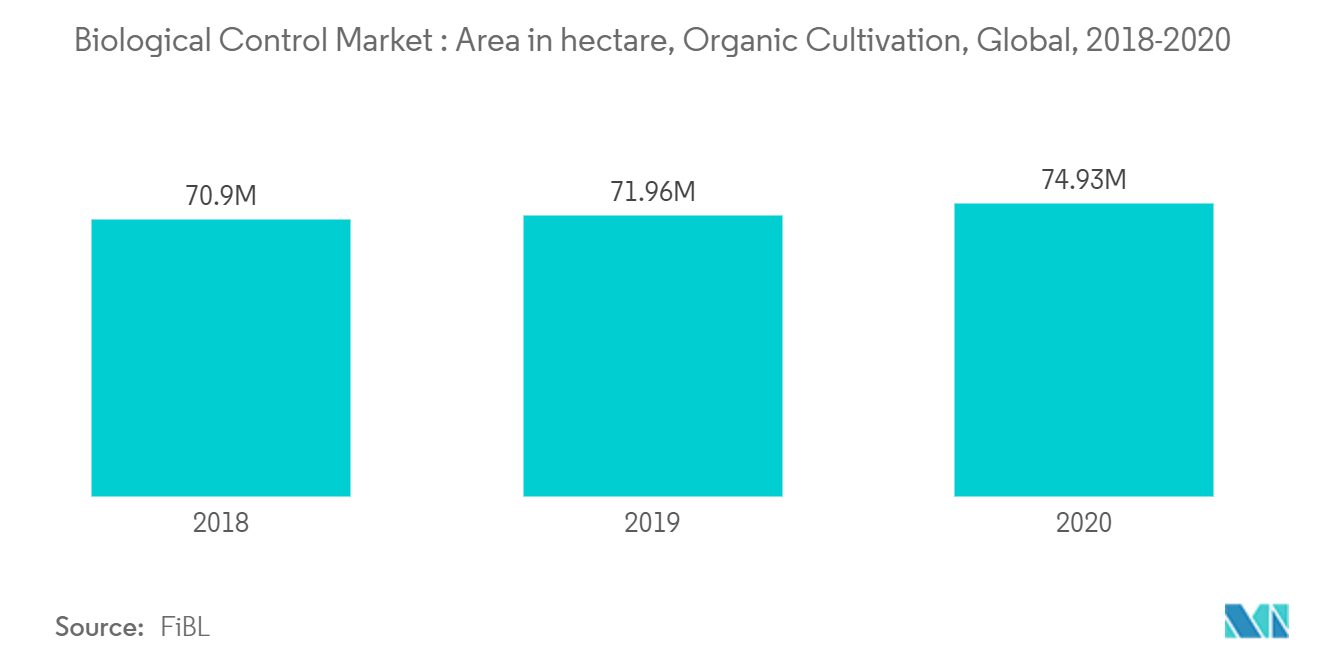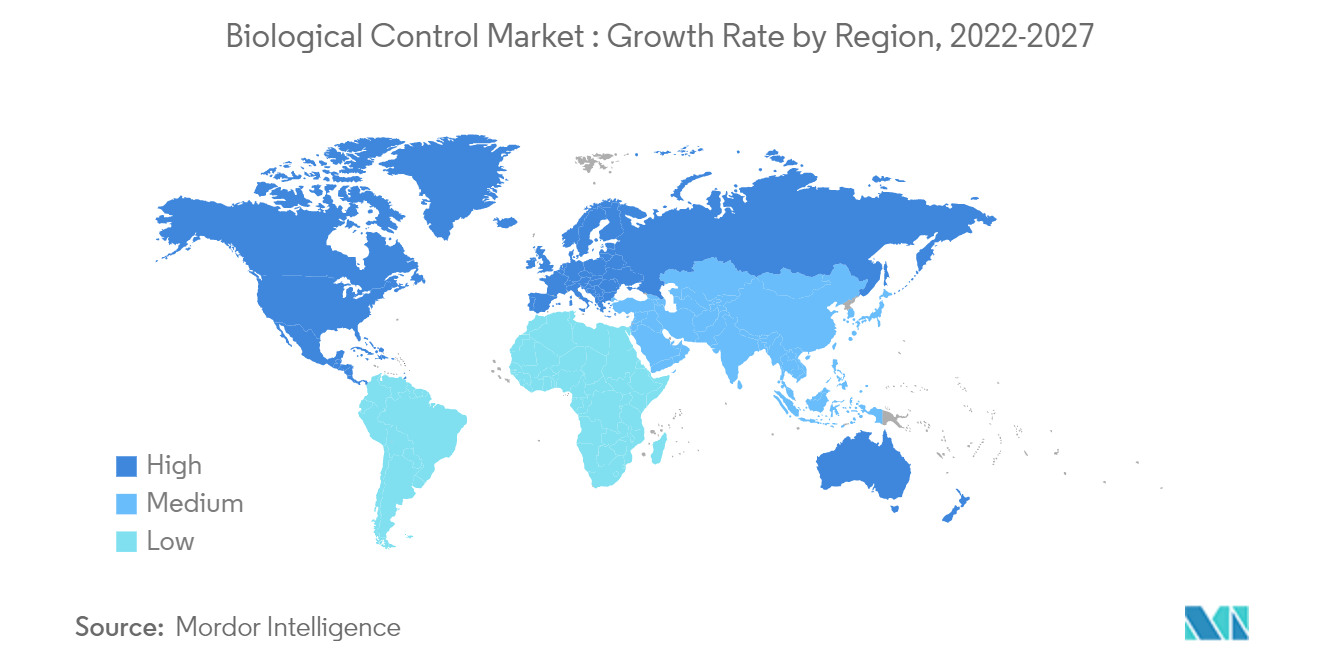Market Trends of Biological Control Industry
Increasing Organic Farming
Organic farming represents a unique, fast-growing segment of the food industry. The area under organic farming is rapidly growing across the world. According to FiBL statistics, the area under organic cultivation across the world was 72.0 million hectares in 2019, which increased by 4.1% and reached 74.9 million hectares in 2020.
Furthermore, Organic Farming incorporates the use of biological controls as a method to deal with pests rather than using Synthetic Crop Protection Chemicals, therefore Biological Control growth in the market is directly proportional to the increasing organic farming.
Additionally, governments around the world are making efforts for the growth of organic farming and this has led them to make legislative changes that shall boost organic farming in coming years. For instance, in 2021, the EU passed new legislation for an effective legal framework for the organic farming industry. This legislation coupled with increased consumer interest in organic products will drive the growth of the biological controls market during the forecast period. Similarly, innovations in the area of biological control products, coupled with a growing consumer awareness about the negative impact of synthetic pesticides, are expected to boost the adoption rate of biological controls shortly.

North America Dominates the Biological Control Market
North America dominates the biological control market. In North America, the United States holds the largest market, with around half of the North American market, owing to the plenty of available arable lands. Rising concerns over organic labeled products and awareness of microbial pesticides efficiency have driven the market in the region. The United States, with its highly evolved agricultural sector, has been adapting to the natural and organic way of farming lately. Therefore, biological control product consumption is a growing trend there. The increasing cost of chemical inputs, their adverse effect on soil mass and the environment, and the increasing awareness regarding balanced plant nutrition are the major factors driving the market demand in the country.
One of the main factors influencing the North American market adoption of biological control is the loss of conventional products due to registration or product performance concerns. Research is a major area of concentration for many important companies, including FMC Corporation, Corteva Agriscience, and Marrone Bio Innovations. For instance, in 2021, Botanical Solution Inc. (BSI), US, and Syngenta reached an agreement to commercialize BSI's first product, BotriStop, in Peru and Mexico. BotriStop was formulated as a biofungicides to effectively control Botrytis cinerea in blueberries, vines, and vegetables. The companies would target the fresh food production demand in Peruvian and Mexican markets.
Furthermore, the demand for biological control products in Canada is largely driven by conventional agriculture, recent changes to municipal and provincial laws governing the cosmetic use of pesticides, and legislation and ensuing promotion for lower-risk pest control products. The rise in the cost of pesticides also has, in turn, led to the high usage of biological control products.

